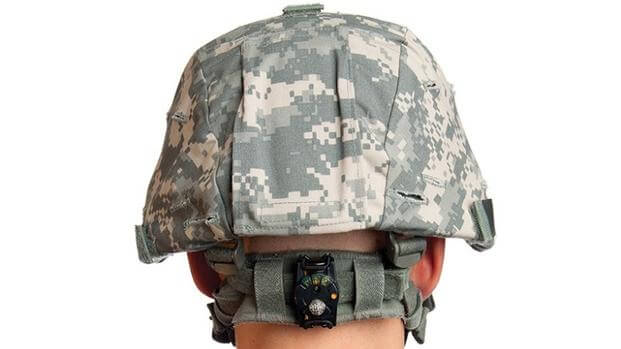The U.S. Army has reportedly stopped an effort to collect and analyze data from blast gauges mounted on helmets and clothing to detect battlefield injuries, according to a news report.
Even though the devices captured reams of data for researchers, including the potentially harmful effects of firing shoulder-fired weapons in confined spaces, they apparently didn't do exactly what officials were hoping for -- and that was to determine how close troops had to be near a blast to receive a concussion, according to a report by NPR's Jon Hamilton.
While Army Secretary Eric Fanning said the Pentagon's "current inventory of blast gauges does not provide consistent and reliable data in the training or combat environment," retired Gen. Peter Chiarelli, the service's former vice chief of staff who led a campaign to raise awareness about the harmful effects of post-traumatic stress disorder (PTSD), traumatic brain injury (TBI) and mental health issues, called the decision to shelve the devices "a huge mistake."
The report references blast gauges made by BlackBox Biometrics, a firm initially funded by the Pentagon's Defense Advanced Research Projects Agency, or DARPA. But the military has tested other blast-protective technology and products, as well.
BAE Systems, for example, makes small sensors that monitor and record the overpressures and accelerations experienced through head impacts or movements. The British-based defense contractor's Headborne Energy Analysis and Diagnostic Systems mounts inside a combat helmet to measure the pressure and angular and linear accelerations from traumatic events.
"If an explosion, for example, causes quick head movements or pressures that exceed predefined thresholds, HEADS records the event," its website states. "This stored event data can later be easily downloaded through a USB connection, allowing medical personnel to receive information crucial in determining the potential for head and brain injuries."
The Army beginning in 2007 put blast sensors into tens of thousands of helmets to monitor head injuries from roadside bombs in Afghanistan. The Pentagon and NCAA in 2014 announced a joint study into concussions. And the Army in 2015 awarded the University of Southern Mississippi a $4.9 million grant to conduct research into helmet liners for soldiers.
Vice Adm. Matthew Nathan, surgeon general of the Navy, last year told Military.com he hopes the partnerships pay off.
'It's not standard practice yet, but the experimental prototypes are allowing us to determine what types of hits and what types of helmets provide the best protection against a concussion," he said.
"One of our challenges is that two individuals can receive the same apparent force injury to their heads and one comes out completely functional and doing fine and the other has headache and some post-concussive signs," Nathan said. "So what it is about individual makeup as well that may make you more susceptible to an injury than your buddy?"









